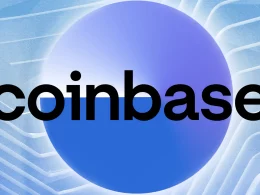The internet has revolutionized the way we live, work, and communicate. It has become an indispensable tool in our daily lives, connecting people across the globe and transforming industries. However, as technology evolves, new barriers emerge, and the quest for a connected future continues.
With the rapid pace of innovation, the internet landscape is constantly evolving, and new technologies are emerging to address the limitations of the traditional internet infrastructure. From satellite-based internet to mesh networks and blockchain-based solutions, these new technologies are pushing the boundaries of what is possible, promising to break barriers and create a more inclusive and connected digital world.
One such technology that is gaining traction is satellite-based internet. Companies like SpaceX, Amazon, and OneWeb are launching satellites into orbit to provide global internet coverage, reaching remote areas where traditional infrastructure is limited or non-existent. These satellite constellations have the potential to bridge the digital divide, bringing internet access to underserved communities and connecting the unconnected billions around the world.
In addition to satellite-based internet, mesh networks are also gaining attention as a disruptive technology that could revolutionize internet connectivity. Mesh networks are decentralized networks that use peer-to-peer connections to relay data, creating a self-healing and resilient network that can operate in remote or disconnected areas. This technology has been used in disaster-stricken regions or developing countries, where traditional infrastructure is lacking, and has shown promise in enabling communication in challenging environments.
Blockchain-based solutions are also being explored as a means to create a more open, transparent, and decentralized internet. Blockchain, the underlying technology behind cryptocurrencies like Bitcoin, can potentially disrupt the current centralized model of the internet, where a few tech giants control the flow of information. Blockchain-based internet solutions aim to empower individuals, protect privacy, and enable secure transactions, while reducing dependence on centralized entities.
While these new technologies hold immense promise, they also raise concerns about privacy, security, and equitable access. Questions around data ownership, regulation, and governance need to be addressed to ensure that these technologies are used responsibly and do not create new barriers or exacerbate existing inequalities. Ethical considerations and safeguards must be put in place to protect users’ rights and prevent misuse of data.
As a society, we need to ensure that the benefits of these new internet technologies are accessible to all, irrespective of geography, income, or background. Bridging the digital divide and creating a connected future requires collaboration between governments, technology companies, and civil society organizations to ensure that no one is left behind.
Conclusion:
The landscape of the internet is constantly evolving, and new technologies are breaking barriers to create a more connected future. From satellite-based internet to mesh networks and blockchain-based solutions, these technologies hold immense promise in bridging the digital divide and empowering individuals. However, responsible and ethical implementation is crucial to ensure that these technologies do not create new barriers and are accessible to all. As we explore these new frontiers of internet technology, it is imperative to prioritize inclusivity, privacy, security, and equitable access, and work towards a connected future that benefits everyone.












